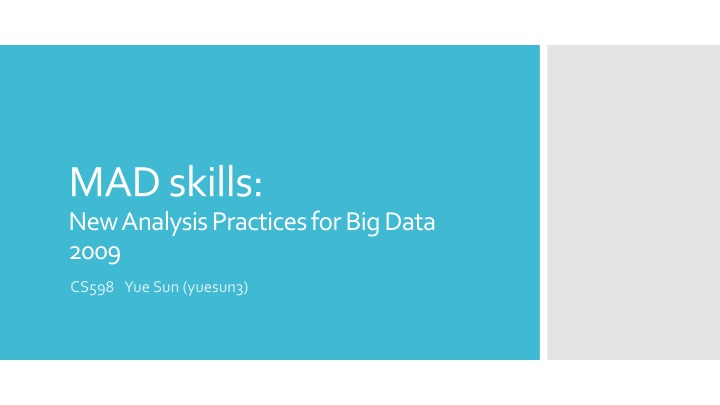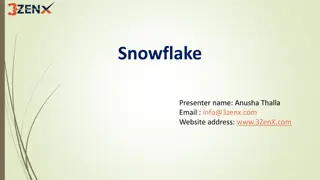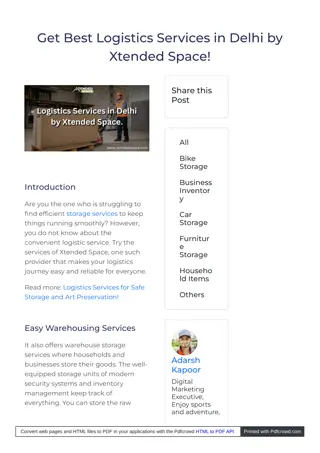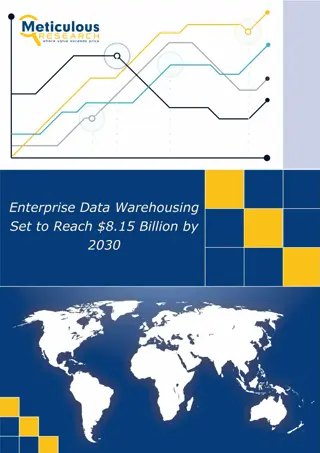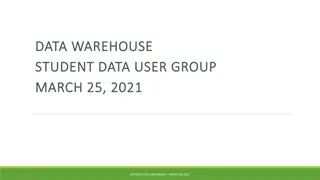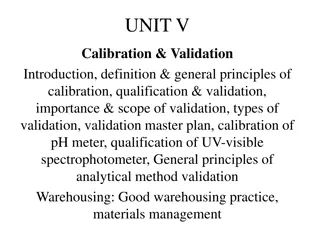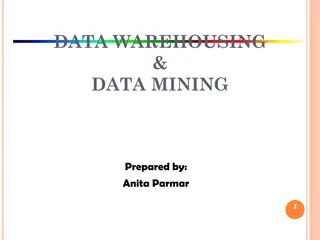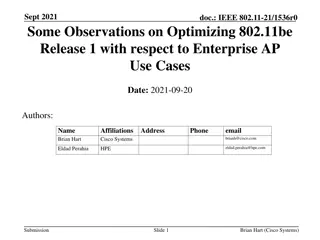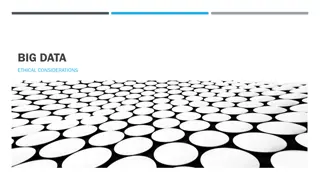Modern Analysis Practices for Big Data in Enterprise Data Warehousing
Explore new analysis practices for handling big data in enterprise data warehousing, focusing on integrating uncleaned data sources, statistical functionalities, and intelligent data cleaning and integration. Learn about MAD database design, sandbox usage, and layers of abstraction in SQL databases.
Download Presentation

Please find below an Image/Link to download the presentation.
The content on the website is provided AS IS for your information and personal use only. It may not be sold, licensed, or shared on other websites without obtaining consent from the author.If you encounter any issues during the download, it is possible that the publisher has removed the file from their server.
You are allowed to download the files provided on this website for personal or commercial use, subject to the condition that they are used lawfully. All files are the property of their respective owners.
The content on the website is provided AS IS for your information and personal use only. It may not be sold, licensed, or shared on other websites without obtaining consent from the author.
E N D
Presentation Transcript
MAD skills: New Analysis Practices for Big Data 2009 CS598 Yue Sun (yuesun3)
Data: Fox Audience Network Trend: using Greenplum parallel database system collect, leverage data in multiple organizational units Motivation ? 1. Cheap storage 2. Growing number of large-scale databases 3. Value of data analysis 4. Complement statisticians with software skills
EDW enterprise data warehouse Problems? discourage integration of uncleaned new data sources architected environment Based on long-range design and planning Limited statistical functionalities Require data to fit in RAM OLAP & data cubes Provides descriptive statistics background
Statistical packages MapReduce and Parallel programming Data-parallel fashion via summations Background continue Data mining and Analytics correspond to only statistical libraries that ship with a stat package Spreadsheets
Objectives: 1. get the data into the warehouse as soon as possible 2. intelligent cleaning of data 3. intelligent integration of data MAD database design 3 layer approach 1. staging schema 2. production data warehouse schema 3. reporting schema
Why sandbox? used for managing experimental processes 1. track and record work and work products 2. materialize query results and reuse the results later Fourth class of schema: Sandbox
Layers of abstraction in traditional SQL database 1. Simple arithmetic 2. Vector arithmetic 3. Functions 4. Functionals Data parallel statistics
Matrix addition: Vectors and Matrices Matrix transpose: Matrix-matrix multiplication
Tf-idf document similarity
Ordinary least squares Matrix based analytical methods
Conjugate gradient update alpha(r_i, p_i, A) update x(x_i, alpha_i, v_i) update r(x_i, alpha_i, v_i, A) update v(r_i, alpha_i, v_i, A) Matrix based analytical methods continue Construction of these functions allow user to insert one full row at a time
Mann-Whitney U Test functional: data-parallel implementations of comparative statistics expressed in SQL
Log-likelihood ratios Example: multinomial distribution useful for comparing a subpopulation to an overall population on a particular attributed
2 standard resampling techniques: 1. bootstrap from a population of size N, pick k members randomly, compute statistic; replace subsample with another k random member Resampling techniques 2. jackknife Repeatedly compute statistic by leaving out one or more data items
MAD DBMS requirements? 1. Easy and efficient to put new data source into the warehouse 2. Make physical storage evolution easy and efficient 3. Provide powerful, flexible programming environment
Require multiple storage mechanisms 1. [early stage] iterate over tasks frequently; load databases quickly; allow users to run queries directly against external tables 2. [for detail tables ] well served by traditional transactional storage techniques 3. [for fact tables] better served by compressed storage because it handles appends and reads more efficiently Storage and partitioning
loading & unloading MAD DBMS Parallel access for external tables via Scatter/Gather Streaming Require coordination with external processes to feed in parallel More Support transformations written in SQL Support MapReduce scripting in DBMS
Support external tables traditional heap storage format for frequent updates data Highly-compressed append-only (AO) table feature for data with no updates With compression off: bulk loads run quickly With most aggressive compression: use as little space as possible With medium compression: improved table scan time with slower loads MAD DBMS
Multiple ways to partition tables: distribution policy partitioning policy (for a table) range partitioning policy list partitioning policy MAD DBMS Partition Note that partitioning structure is completely mutable
